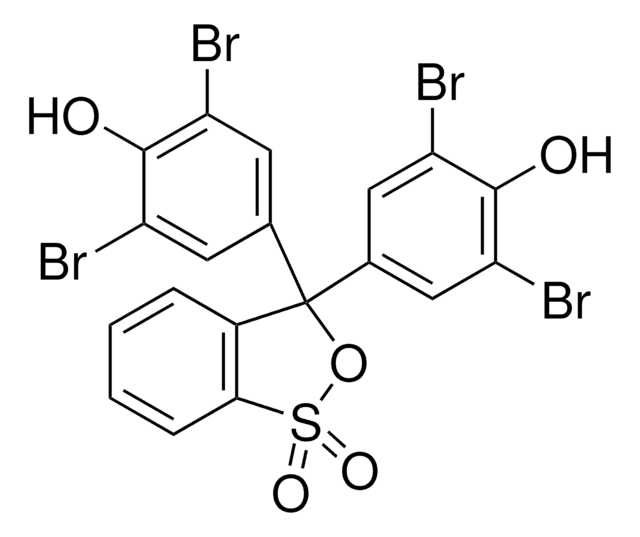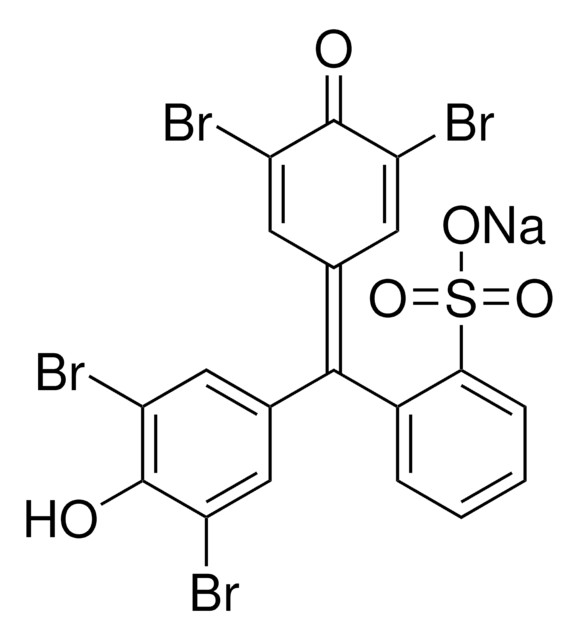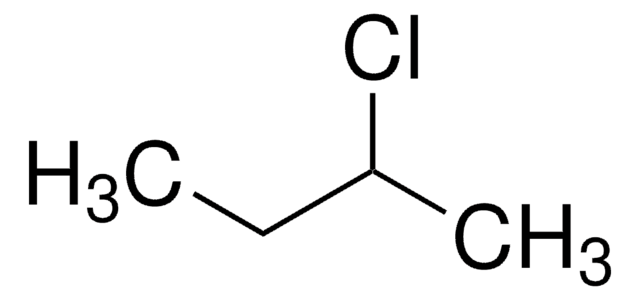114391
Bromophenol Blue
ACS reagent
Sinónimos:
3′,3″,5′,5″-Tetrabromophenolsulfonphthalein, Bromphenol Blue Sultone Form
About This Item
Productos recomendados
grade
ACS reagent
Quality Level
form
powder
technique(s)
titration: suitable
visual transition interval
3.0-4.6, yellow to blue
mp
273 °C (lit.)
solubility
ethanol: 0.1%
application(s)
diagnostic assay manufacturing
hematology
histology
storage temp.
room temp
SMILES string
Oc1c(Br)cc(cc1Br)C2(OS(=O)(=O)c3ccccc23)c4cc(Br)c(O)c(Br)c4
InChI
1S/C19H10Br4O5S/c20-12-5-9(6-13(21)17(12)24)19(10-7-14(22)18(25)15(23)8-10)11-3-1-2-4-16(11)29(26,27)28-19/h1-8,24-25H
InChI key
UDSAIICHUKSCKT-UHFFFAOYSA-N
¿Está buscando productos similares? Visita Guía de comparación de productos
Categorías relacionadas
General description
Application
Storage Class
11 - Combustible Solids
wgk_germany
WGK 3
flash_point_f
Not applicable
flash_point_c
Not applicable
ppe
Eyeshields, Gloves, type N95 (US)
Elija entre una de las versiones más recientes:
¿Ya tiene este producto?
Encuentre la documentación para los productos que ha comprado recientemente en la Biblioteca de documentos.
Nuestro equipo de científicos tiene experiencia en todas las áreas de investigación: Ciencias de la vida, Ciencia de los materiales, Síntesis química, Cromatografía, Analítica y muchas otras.
Póngase en contacto con el Servicio técnico







